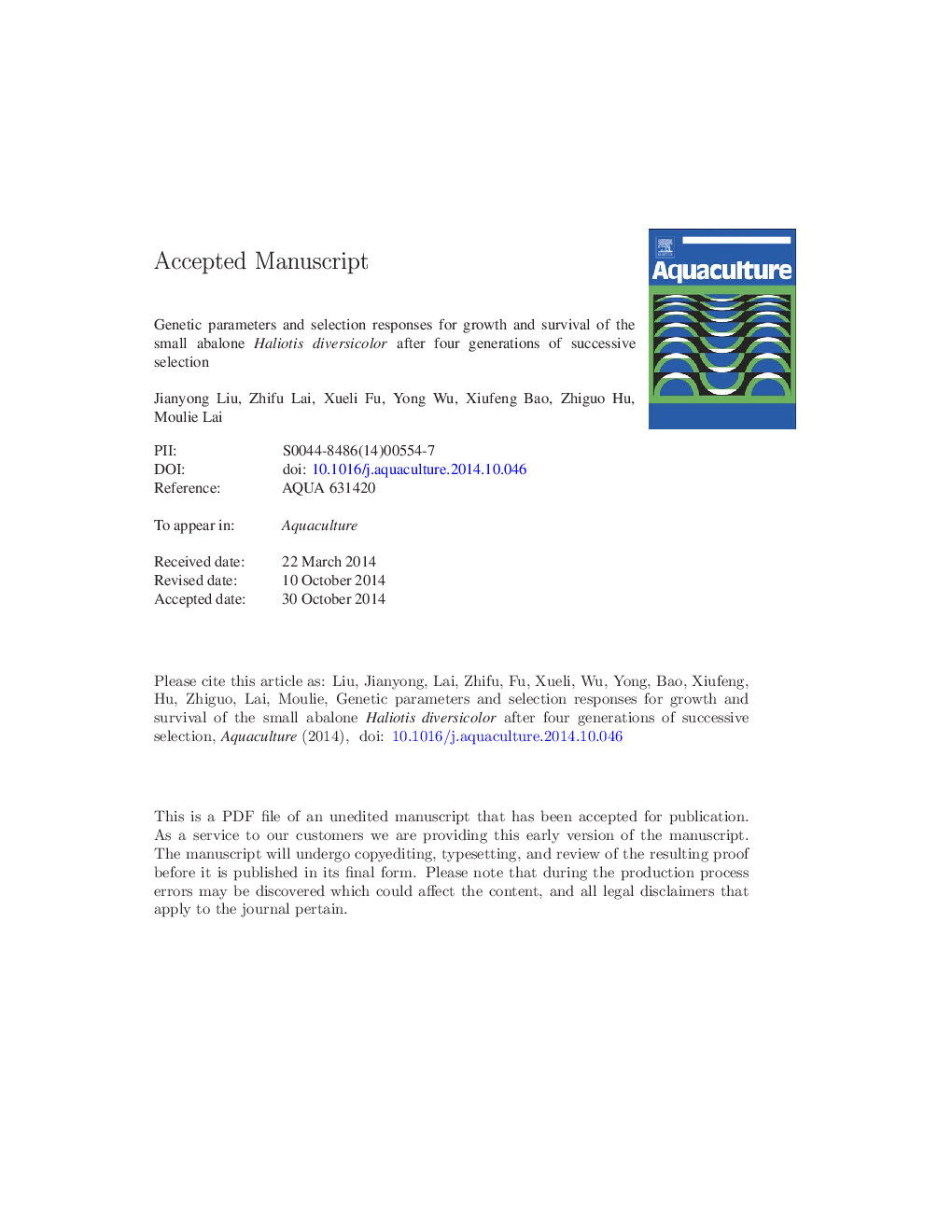| Article ID | Journal | Published Year | Pages | File Type |
|---|---|---|---|---|
| 8494777 | Aquaculture | 2015 | 35 Pages |
Abstract
Genetic parameters and selection responses were estimated for growth and survival of the small abalone Haliotis diversicolor using a fully pedigreed synthetic population from two Chinese hatchery stocks and two wild stocks. About 53,300 progeny representing 533 full-sib families from the mating between 308 sires and 533 dams were tested in concrete tanks for five generations. Breeding candidates in the base generation (G0) and first generation (G1) were selected based on their estimated breeding values for growth (recorded as shell length at tagging and harvest), while those in later generations (G2-G3) were selected according to a selection index including individual breeding values for growth and family breeding values for survival traits. Variance components and genetic parameters were estimated using animal models and the restricted maximum-likelihood method. The breeding values of all animals over five generations were estimated using the best linear unbiased prediction. Within generations, the heritability estimates for square root transformed tagging shell length and harvest shell length were moderate, ranging from 0.125 to 0.237 and from 0.196 to 0.308, respectively. Across generations, the heritability estimates for the two growth traits were relatively low; 0.109 and 0.169, respectively, and the heritability of survival was low (0.069), but suggestive of a significant additive genetic component. Including all data, the effects common to full-sibs other than additive genetic effects (c2) accounted for 5.1%, 2.6% and 3.1% of the total phenotypic variance for transformed tagging shell length, harvest shell length and survival traits, respectively, and the three values were significantly different from zero (PÂ <Â 0.05). Genetic correlations of harvest shell length with tagging shell length and survival were favorable and significantly different from zero; 0.633 and 0.467, respectively. The predicted response was obtained from the difference in the mean breeding values between generations. When using the LS mean of the base population (G0) as a baseline for comparison, the average selection response of harvest shell length expressed as proportions ranged from 6.1% to 12.6%, with an average of 9.2%. The average estimated selection response per population for survival was 4.1%, and the accumulated selection response was 16.5% after performing four generations of selection. Based on these results, the breeding population had considerable additive genetic variation in growth traits, and the ongoing selective breeding program resulted in considerable genetic improvement in growth and survival in H. diversicolor.
Related Topics
Life Sciences
Agricultural and Biological Sciences
Aquatic Science
Authors
Jianyong Liu, Zhifu Lai, Xueli Fu, Yong Wu, Xiufeng Bao, Zhiguo Hu, Moulie Lai,
